How Long Can You Leave a Puppy Alone?
Check out these tips for new puppy parents on managing their alone time and preventing separation anxiety.
Check out these tips for new puppy parents on managing their alone time and preventing separation anxiety.
by Elizabeth Laura Nelson, expert review by Mia Nguyen, CPDT-KA, FFCP | May 1, 2025
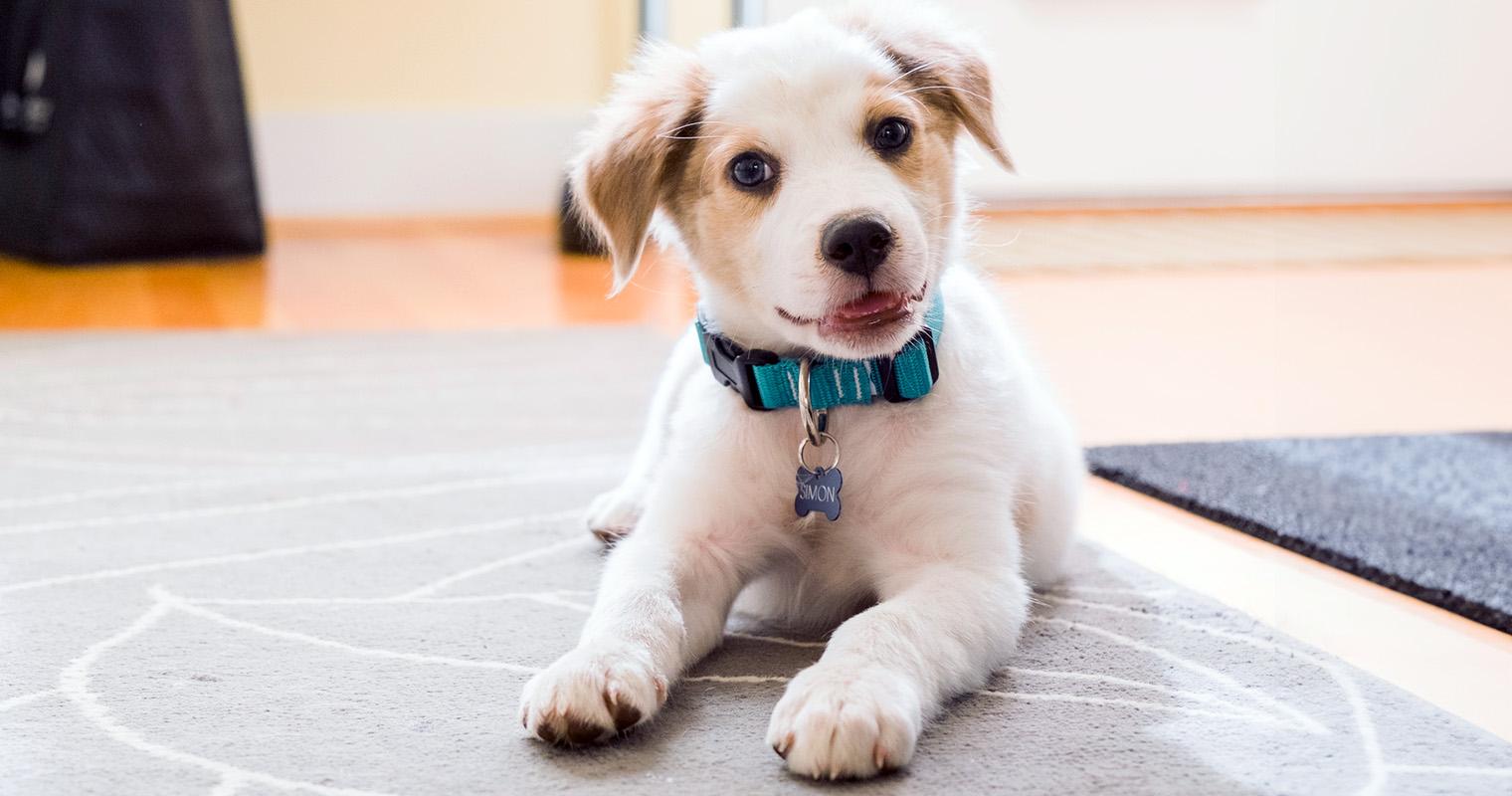
Nicolesy, Inc. / Stocksy
When you bring a new puppy home, leaving them alone is probably the last thing on your mind. You’re more concerned with helping them get used to their new home, gathering the supplies you’ll need, making sure they have everything they need, and showering them with love. (Plus, cuddling — lots and lots of cuddling.) Eventually, errands, work, and your social life will come calling, and you’ll ask: Can I leave my puppy alone? And if so, when? Also, how long can puppies even hold their pee? Leaving a puppy alone at home for the first time can be nerve-wracking, but with the expert advice below, it doesn’t have to be.
Puppies need regular attention, but how long they can be left alone depends on their age, breed, and temperament. Generally, puppies under six months should not be left alone for more than two to three hours, due to their small bladders and need for social interaction. Older puppies can handle longer periods, but it’s important to ensure they have toys, a safe space, and breaks when possible.
Keep reading to find out when and how you can safely leave your new pup on their own, and for answers to commonly asked questions from puppy parents just like you.
When considering leaving your puppy alone, you’ll want to take into account several factors. How old is your puppy? Are they in good health? Have they been crate-trained, or had any training at all? Different dogs respond differently to being left alone, as well. Here’s how each of these factors come into play when deciding if you can leave your puppy alone.
“Generally, puppies can hold their bladders about one hour for each month of age, plus one extra hour,” says Liz Dimit, CCPDT, dog training expert at Dogtopia. That means a two-month-old puppy can be left alone for two to three hours, maximum. No matter how old your puppy is, though, it’s important to pay attention to their personal needs, as all dogs are different.
“If you’ve got a nervous or clingy pup, leaving them alone for too long might make them stressed,” Dimit says. “It’s always better to ease into alone time gradually, no matter the dog. The most important part is getting your pup on a schedule and a routine. The more structured you can be in the beginning, the faster they will learn.
If you’ve adopted a toy (or miniature) breed, be prepared to be on potty duty more often. “Smaller breeds tend to have smaller bladders, so they may need more frequent breaks,” Dimit says. However, bladder size isn’t the only reason why different breeds respond differently to being left alone.
If your puppy is dealing with any health challenges causing them physical discomfort, this may increase their overall stress level, making it more difficult to leave them alone, Chong says. “When a dog is in discomfort, even minor separation can push them closer to their threshold, making it harder for them to manage being alone.”
She urges addressing any health issues and making sure your puppy is not in any pain before you consider leaving them alone, to reduce stress on them and create a more comfortable environment.
Ultimately, your veterinarian is the best resource for deciding when a puppy with medical issues can be left alone. “If there are any medical or health concerns, one should always defer to their veterinarian regarding recommendations and timing [for being left alone],” says Ashley Dalton, CPDT-KA, a dog trainer at Zoom Room. “There may be reasons a puppy needs more frequent monitoring.”
Puppies adopted from a shelter come from all different backgrounds, and may have had different levels and types of training, or none at all. This affects how long they can be left alone as well. “Puppies who have had negative experiences, such as being left alone for too long or beyond what they can handle, may find separation more challenging in the future,” says Qiai Chong, Chief Behaviorist at Pet Coach SG. “When a puppy is left alone beyond their threshold, it can intensify their emotions and lead to a cycle of increased anxiety.”
Certain breed groups, such as companion dogs or those with higher attachment tendencies (for example, Poodles and Golden Retrievers), may experience more challenges with separation,” Chong says. She notes that this is based on her own anecdotal experience with clients and is not a hard-and-fast rule. “Every dog is unique, and individual experiences can vary greatly.”
Patience is key when helping a puppy overcome past negative conditions. “Positive early socialization and gradual exposure to alone time can help break this cycle and build their confidence over time,” Chong says.
What sort of setup do you have for your puppy? This can factor into when you feel comfortable leaving them alone, Dalton says. “Many [people] recommend crate training, and crating a puppy when you leave as a way to help teach potty training,” she says. “However, for longer durations — or smaller dogs, with tiny bladders — this might not always be the best option.”
Dalton says that depending on your particular pup’s personality, an exercise pen can be a good alternative. “Puppies need plenty of downtime during the day. They usually sleep 18 to 20 hours a day. But puppies’ needs must be met before leaving them alone.”
If you’re thinking about how to leave a puppy home alone, there are some general rules of thumb you can refer to, as recommended by experts.
The experts agree: Puppies under 10 weeks of age shouldn’t be left alone for long, if at all. “It is not generally recommended to leave puppies 10 weeks and under alone for more than an hour,” Dalton says. “However, this is just a guideline, and every dog is different. A large part of this has to do with potty training and a puppy’s ability to hold it.”
“At eight weeks old, puppies need someone to check on them every hour,” adds Colby Julien, animal behaviorist and dog trainer at Geo-Sniffing. In other words, when you have a brand-new puppy, be prepared to be somewhat housebound. Or have a stable of puppy-sitters you can call on when you need a break, have work, an errand, or other obligation that’s not puppy-friendly.
As your puppy gets older, they’ll likely be able to handle longer periods alone. By the time they’re 10 to 12 weeks (or about three months), puppies can usually manage on their own for about two hours. “Gradually build your puppy’s tolerance for being alone,” Julien says. “Start with short periods, like a 10-minute walk or quick errand, and progressively extend the time to activities like grocery shopping or visiting a friend.”
The older the puppy, the more time alone they’ll be able to handle, generally speaking. Bladder size isn’t the only thing to take into account. And as your puppy gets older, this may become more apparent. “After six months, other factors start to influence their tolerance,” Julien says. “Breed type becomes more significant, with high-energy breeds like Border Collies needing frequent mental stimulation, while less active breeds, such as Basset Hounds, are more comfortable with extended periods of solitude.”
Wondering how to teach your puppy to be alone? Our experts have tips. Read on for their best advice to combat puppy separation anxiety, how long a puppy can stay in a crate, how often a puppy needs to eat, and other tips for leaving a puppy home alone.
Before you leave your puppy alone, it’s important to practice. Try a dry run in the crate first, because it can be a scary place for a puppy. “If they are placed in a crate without building duration and positive experiences, and then are suddenly left alone,” Dalton says, “they can develop poor associations with being crated.” Feed them meals in the crate while you’re there to keep an eye on them, and slowly start closing the door to help them adjust. “Closing them in the crate and then expecting them to ‘get over it’ can create more problems in the long run,” she says.
“When you are finally ready to leave your puppy alone for the first time, try to keep your absence short, even if they are three-plus months old,” Dalton says. “You can say something along the lines of ‘goodbye’ or ‘be back soon,’ which will eventually turn into a cue that you are leaving. But don’t make a major deal about saying goodbye.” Your puppy will take their cues from you, so act accordingly. “When you return, again, try to keep your greeting low-key,” Dalton says. “The goal is to have leaving and returning be neutral events, instead of raising our energy level and making them either super exciting or emotional.”
Dimit emphasizes the importance of setting the stage before you leave. “It’s key to create a safe, cozy space like a crate or puppy pen for them to be during the duration they’ll be alone,” she says. “Provide a few enrichment activities to keep them happy. You can give them a lick mat, stuffed Kong with some kibble, and of course, chew-safe toys are all great resources.” These work best for puppies who aren’t over-chewers. Test them out at home and watch how your puppy uses them. She also suggests reserving a high-value treat for just before you leave, so they have a positive association with being left alone, rather than a stressful one. “If your pup knows alone time equals treats and fun, they’re less likely to freak out.”
Chong says that using a CCTV or dog video monitor can be helpful, so you can see how your puppy is responding to you being away. “This allows you to better understand how they are handling the situation. Watch for signs of distress such as pacing, barking, whining, or attempting to escape,” she says. “If these behaviors persist, it’s important to return home immediately to reduce stress and ensure they don’t become overwhelmed. Once your puppy shows signs of handling the separation well, you can gradually extend the duration over time.” Her biggest piece of advice? Take your cues from your puppy. “Always stay attentive and adjust as needed to create positive experiences for your puppy.”
It’s fun to play with your puppy, but don’t roughhouse right before you’re planning to head out the door (tempting though it may be). “It’s important to never leave a puppy alone immediately after a burst of excitement,” Julien says. And that doesn’t just apply to playtime. “Excitement can stem from activities like exercising, playing, training, visiting a new place, having guests over, or drinking a lot of water.”
Julien explains: “Once you leave, the puppy’s nervous system calms down and enters ‘rest and digest.’ They enter a state of relaxation, which often triggers the need to eliminate. Waiting until the puppy has had a chance to settle and eliminate before leaving helps prevent accidents and supports successful potty training.” If you’ve heard that it’s good to tire your dog out before putting them in a crate, Julien says to keep in mind that this doesn’t apply to puppies who are still learning the ropes, and may not be quite in control of their bladders yet. “The advice to exercise a dog before you leave is great for energized adolescent dogs, but is bad for potty-training puppies.”
This should go without saying, but your puppy should not stay in a crate longer than they can go without using the bathroom. Puppies need to eat frequently: This will depend on your dog’s physiology, and your vet will be able to tell you the specific feeding schedule that is ideal. Don’t leave them alone for longer than they can go between meals. They should not be in a crate when they are feeling hungry. Puppies should not be left alone for extended periods, including overnight.
Probably not. “Most dogs will not outgrow separation anxiety without a human taking specific actions to help their dog overcome it,” Julien says. Read more specifics about how to help them, here.
Julien says the best thing to do to avoid separation anxiety problems from the start is to teach your puppy that they don’t need constant interaction. “We tend to overstimulate our dogs, which causes them to feel anxious when not stimulated. It’s crucial to teach a dog’s nervous system that their body does not need to be constantly producing adrenaline cortisol and dopamine to feel okay.”
Crate training involves first finding the right size crate, then rewarding your pup with toys and treats for being in the crate, so they develop positive associations with being inside it. Additionally, it’s important to slowly let them grow accustomed to the crate — ie keeping the door open at first and then closing it over time. Julien is a fan of the book Crate Games, by Susan Garret. “It’s a proven method from a world-renowned trainer, to help your puppy love their crate. If they love their crate, they will be less likely to have separation anxiety,” she says.

Elizabeth Laura Nelson is a writer and editor based in Brooklyn, New York. As a child, Elizabeth was scared of cats (claws and teeth, yikes) but she has since gotten over her fear and now shares her home with three sweet and gentle feline companions who make life better (and cuddlier) every day.
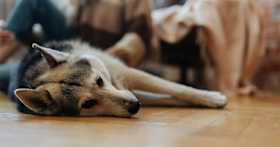
Behavior & Training
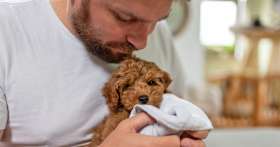
Adoption Advice
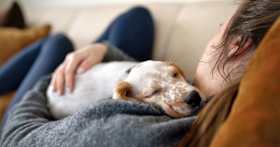
Adoption Advice
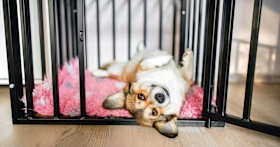
Adoption Advice
Finding the right crate size is important. But so is considering your dog’s age, circumstances, and training goals. Our guide is here to help.
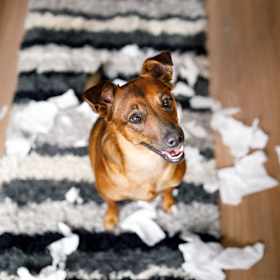
Behavior & Training
Is your dog bent on destroying everything in sight? (We know the feeling.) Here are the best ways to stop this destructive behavior.
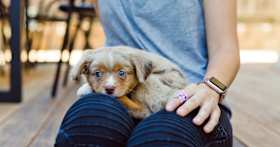
Adoption Advice
The right timing can make all the difference in your puppy’s growth and behavior.

Behavior & Training
Wondering if you should crate train your new pup? Yes, you should! Read on for everything you need to know about introducing your dog to crate-training.
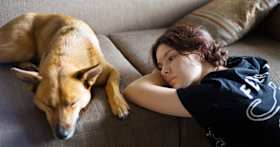
Adoption Advice
Find out how to set your adopted rescue dog up for success.
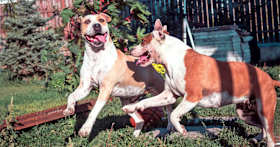
Adoption Advice
Here’s everything there is to consider before adopting a second dog.